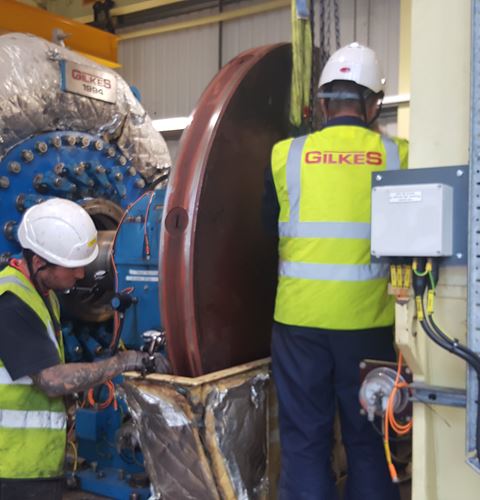Dolgarrog Powerstation
North Wales, UK
Dolgarrog History
Dolgarrog hydroelectric power station, located in the Conwy Valley, North Wales, was commissioned in 1907 by the Aluminium Corporation of Dolgarrog to supply electricity to its aluminium smelting plant. Public electricity supplies began in 1922 when power lines were constructed to transmit electricity from the power station to Colwyn Bay, Conwy and Llandudno.
The original power station was extended in the 1920’s and is now owned by RWE. The Power station feeds the National Grid and has undergone numerous upgrades, first in 1992 and again in 2014 at a cost of £15m.
Dolgarrog Today
The current facility consists of two schemes, the High Head (Llyn Cowlyd) scheme at approximately 350m head and the Low Head (Llyn Coedty) scheme at approximately 235m. The leats and pipelines bring the water from the uplands and are configured as two independent feeds into the power station generating 17MW and 15MW of electricity respectively.
Each scheme is powered by two Francis Turbines. Llyn Cowlyd with 1 x 7MW & 1 x 10MW turbines, and Llyn Coedty with 1 x 10MW & 1 x 5MW turbines.
The 5MW turbine on the low head Llyn Coedty scheme is a Gilkes horizontal Francis turbine coupled to a six pole synchronous generator. The scheme, along with the associated penstock pipework, inlet valves, and auxiliaries, was designed and installed by Gilkes in 1994.
The unit has been maintained routinely, and has operated reliably over the years. However, at some point during the life of a hydropower schemes there will undoubtedly come a time where certain aspects need to be replaced, refurbished or upgraded.
Mid-Life Refurbishment
During 2019 and 2020, Gilkes engineers carried out refurbishment of the turbine; to repair & replace damaged turbine components.
Dolgarrog Unit 5 is one of two Francis turbines on the Coedty Low Head scheme, which includes a storage reservoir supplying water to the power station via a single penstock pipeline. In 2017, failure within the switchgear caused internal component damage and the decision was made to carry out a mid-life mechanical refurbishment. As original manufacturers of the turbine, Gilkes was awarded the contract to carry out the work.
The initial phase of the refurbishment in 2019 met with some challenges. As with any mechanical refurbishment, the extent of the work can be somewhat unknown until the machine is fully stripped down and inspected. On this occasion, the hydraulic locking bush for the runner would not release due to age. It was decided to continue with the rest of the work scope and revisit the runner refurbishment at a later date.
In 2020, our engineering team returned to site during the planned 2020 outage. With a replacement locking bush, they were able to remove the runner and fully complete the runner and top chamber refurbishment.
Gilkes have a long-standing relationship with RWE and continue to provide regular service and inspections at their UK Hydro sites. Site surveys and condition assessments by Gilkes can reduce unplanned downtime and result in improved performance and functionality of a plant.
Scope of Work
The considerable scope of work completed during the 2019 & 2020 outages included:
- Replacement shaft sleeve
- Replacement runner wear rings
- Replacement static wear rings
- Replacement top chamber cheek plate
- Replacement guide vanes
- Replacement guide vane bushes
- Balancing of the 8t flywheel
- Inspection of the generator bearings
- Repair of internal paint coating
- Replacement Hydraulic locking bush
- Replacement of all balance pipework fasteners
- Supply and installation of additional lifting beam to aid future removal of MIV
Download Case Study

Key Stats
- Original Installation 1994
- Modernisation 2019 & 2020
- Power 5MW
- Net Head 235 m
- Flow 2660 l/s
- Turbine Horizontal Francis
After being used to generate electricity, some water from the power station’s outflow tops up the nearby Surf Snowdonia lagoon.

